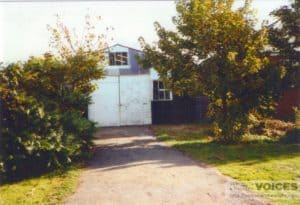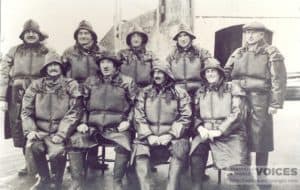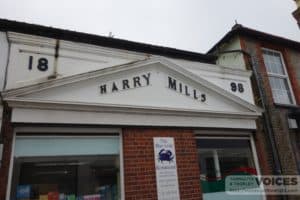Bob Cook’s grandfather, Bob Buckett, and Jack Payne, Fred Wadham and my Dad, Bill Levey, they put in all the piles for the harbour breakwater by hand. You wouldn’t have had a pier or breakwater if it wasn’t for them. You can see their piling rig in the photo, the crab winch in the background was part of it. See the length of pipe in his hand?
They would push it on the winch brake handle so you could hold the brake on – the handles on them were never long enough. Winching that weight up time and time again, to knock the piles in, that was hard work wasn’t it eh? The times they went in the tide under the pier when they were rebuilding it! Look at the clothes they wore in those days, didn’t have overalls and if it rained they got wet. My Dad fell in, sea boots and all. Good job he was a good swimmer.
I can always remember how the old men used to get down the Spit and Lean on the Quay, spinning yarns. You know how these old boys like to yarn.
Jean Maitland nee Levey









